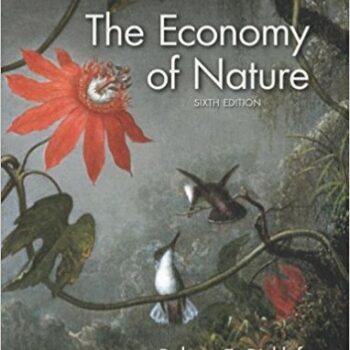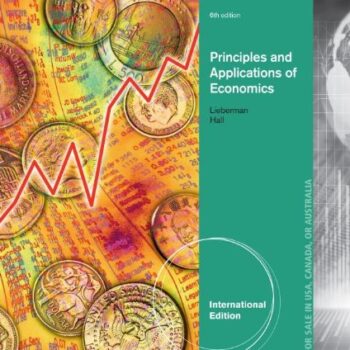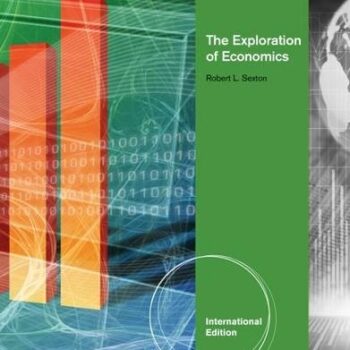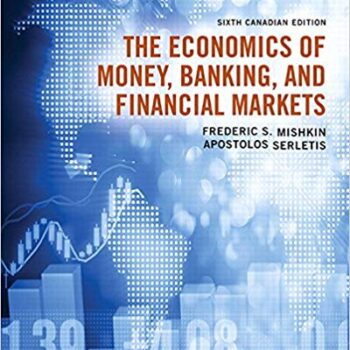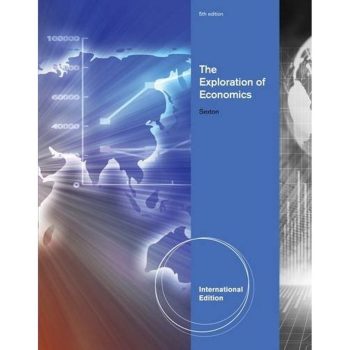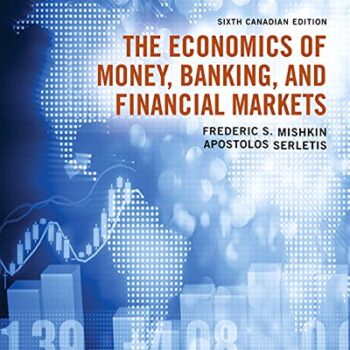Hello and welcome to our store! We offer Test Bank for Money, Banking, and Financial Markets, 5th Edition by Cecchetti. This test bank is a great aid for students and teachers, with an accompanying question-and-answer set that closely follows the content of the book.
Key Topics Covered
- Money and the Financial Systems: Get insights into the significance of money within the economy and the functioning of the financial markets.
- Interest Rates: Familiarize yourself with how these rates are set and their influence on the economy.
- Financial Institutions: Gain further knowledge on the various financial institutions and their operations.
- Central Banks and Monetary Policy: Understand how central banks implement monetary policy to control the economy.
- Financial Markets: Learn how stock, bond, and other financial markets function.
Benefits of Using Our Test Bank
Try our test bank and feel the benefits in the following ways:
- Prepare In The Right Way: The question bank is enjoyable because it provides a wide range of questions about the subject; You will be able to answer many pertinent queries after grasping the main ideas.
- Boost Grades: One of the most beneficial features of this preparation method is that students gain familiarity with the actual examination questions which enhances their confidence and ability to earn high marks.
- Save Time: Direct your reading in the direction of the most important issues.
Why Should One Use Braintrust Test Banks?
Test banks Sofia test the easy and reliable test banks that are within reach. With our work, you will easily pass exams and comprehend complicated subjects more effectively.
Summary
Our Test Banks for Money, Banking, and Financial Markets: 5th edition by Cecchetti is recommended study material for students who want to improve their academic performance. It provides a ready quick reference on the material segments while presenting the details in a simple and uncomplicated structure.
Test Bank For Money Banking and Financial Markets 5th Edition Cecchetti
Chapter 03
Financial Instruments, Financial Markets, and Financial Institutions
Multiple–Choice Questions
1. A financial intermediary:
a. is an agency that guarantees a loan.
b. is a third party that facilitates a transaction between a borrower and a lender.
c. would be used in direct finance.
d. must be a depository institution.
Ans: B
Difficulty: 01 Easy
Learning Objective: 03-01
AACSB: Reflective Thinking
Blooms: Remember
Topic: Financial Instruments
2. Most individuals borrow:
a. directly without the use of a financial intermediary.
b. using a financial intermediary because it lowers the cost of borrowing.
c. using a financial intermediary, but would save money if they financed directly.
d. without using financial intermediaries, preferring credit cards.
Ans: B
Difficulty: 01 Easy
Learning Objective: 03-01
AACSB: Reflective Thinking
Blooms: Remember
Topic: Financial Instruments
3. Tom obtains a car loan from Old Town Bank.
a. The car loan is Tom‘s asset and the bank’s liability.
b. The car loan is Tom‘s asset, but the liability belongs to the bank’s depositors.
c. The car loan is Tom‘s liability and an asset for Old Town Bank.
d. The car loan is Tom‘s liability and a liability of the bank until Tom pays it off.
Ans: C
Difficulty: 02 Medium
Learning Objective: 03-01
AACSB: Reflective Thinking Blooms: Understand
Topic: Financial Instruments
4. The ultimate role of the financial system of a country is to:
a. provide a place for wealthy households to save.
b. be a low-cost source of funds for the government.
c. facilitate production, employment, and consumption.
d. provide jobs in the financial sector.
Ans: C
Difficulty: 01 Easy
Learning Objective: 03-01
AACSB: Reflective Thinking Blooms: Remember
Topic: Financial Instruments
5. Loans made between borrowers and lenders are:
a. liabilities to the lenders and assets to the borrowers since the borrower obtains the funds.
b. assets to the lenders and liabilities of the borrowers since the promises are made to the lenders.
c. not part of either party’s assets or liabilities until the loans are repaid.
d. liabilities to both the lenders and the borrowers.
Ans: B
Difficulty: 02 Medium
Learning Objective: 03-01
AACSB: Reflective Thinking
Blooms: Understand
Topic: Financial Instruments
6. Financial instruments are used to channel funds from:
a. savers to borrowers in financial markets and via financial institutions.
b. savers to borrowers in financial markets but not through financial institutions.
c. borrowers to savers in financial markets but not through financial institutions.
d. borrowers to savers through financial institutions, but not in financial markets.
Ans: A
Difficulty: 02 Medium
Learning Objective: 03-01
AACSB: Reflective Thinking
Blooms: Understand
Topic: Financial Instruments
7. Loans made between borrowers and lenders are:
a. usually not taxable at the federal level.
b. legal only in the state of origination.
c. assets of the lenders.
d. assets of the borrowers.
Ans: C
Difficulty: 01 Easy
Learning Objective: 03-01
AACSB: Reflective Thinking
Blooms: Remember
Topic: Financial Instruments
8. Loans made between lenders and borrowers are:
a. assets to the borrowers.
b. liabilities of the lenders.
c. not taxable in the state of origination.
d. liabilities of the borrowers.
Ans: D
Difficulty: 01 Easy
Learning Objective: 03-01
AACSB: Reflective Thinking
Blooms: Remember
Topic: Financial Instruments
9. The process of financial intermediation:
a. creates a net cost to an economy.
b. increases the economy‘s ability to produce.
c. is always used when a borrower needs to obtain funds.
d. is used primarily in underdeveloped countries.
Ans: B
Difficulty: Medium
Learning Objective: 03-01
AACSB: Reflective Thinking
Blooms: Understand
Topic: Financial Instruments
10. Which of the following statements is most correct?
a. Financial intermediaries are banks.
b. A bank is a financial intermediary.
c. Financial intermediaries are insurance companies.
d. Financial intermediaries are essential to direct finance.
Ans: B
Difficulty: 02 Medium
Learning Objective: 03-03
AACSB: Reflective Thinking
Blooms: Understand
Topic: Financial Institutions





